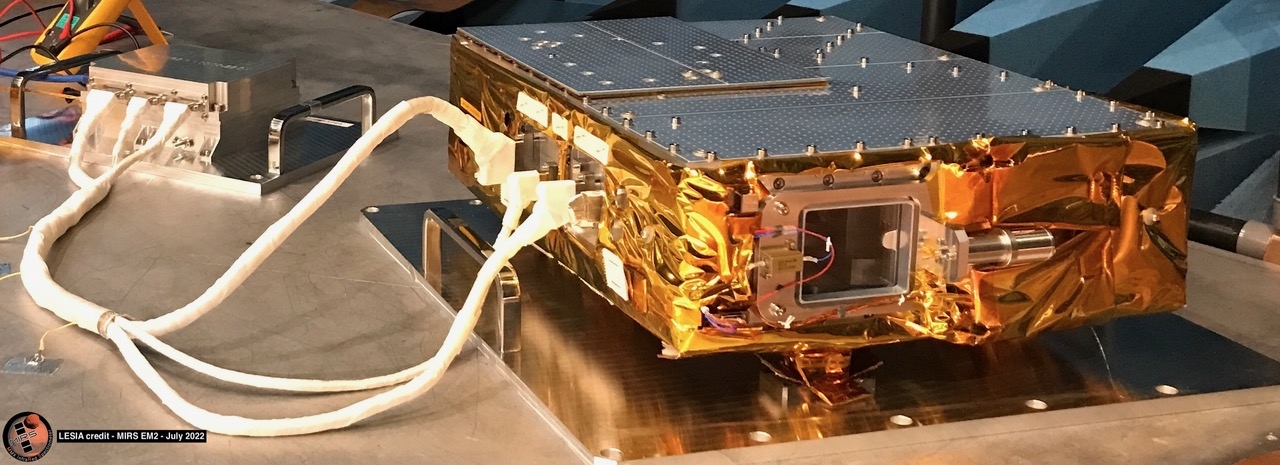MIRS: departure for Japan
MIRS, a small instrument weighing just ten kilos, is a veritable jewel of technology developed in just 4 years. Developed collectively by CNES, LESIA, LAB, LATMOS,OMP andIRAP, it will play a major role in JAXA ‘s MMX mission.

MIRS – shown above – is a near-infrared imaging spectrometer that will be installed on the main body of the MMX probe, and whose name is a condensed version of “MMX InfraRed Spectrometer”. Active during the observation phases in orbit around Mars, as well as during the approaches to its moons to collect mission samples, the instrument will aim to identify the minerals present on the surface of Phobos and Deimos thanks to their spectral signature. Thanks to its obervations, MIRS will contribute to the selection of the two sample collection sites on the surface of Phobos, with an unprecedented resolution of just a few centimetres!
Beyond this objective, the French instrument will also be able to reveal the presence of water or organic matter, as well as observing the appearance and evolution of dust storms and clouds.
The departure of MIRS for Japan on March 21, 2024 marks a new stage in this collective adventure. What’s next? The official handover between the French and Japanese teams, who will then take charge of the integration of the instrument on the probe, ahead of its launch in 2026.
The contribution of French laboratories
MIRS is an instrument that benefits from expertise developed through the VIRTIS spectrometers onboard other missions, notably Rosetta, Venus Express and ESA’s Marco Polo project. Development is the responsibility of LESIA (Laboratoire d’études spatiales et d’instrumentation en astrophysique) of CNRS/Observatoire de Paris, with the participation of partner laboratories LAB (Laboratoire d’Astrophysique de Bordeaux), LATMOS (Laboratoire Atmosphère, Milieux, Observations Spatiales), OMP (Obervatoire Midi Pyrénées), LAM (Laboratoire d’Astrophysique de Marseille), IRAP (Institut de Recherche en Astrophysique et Planétologie – Toulouse).
CNES is the prime contractor for the MIRS instrument. It is involved in the instrument’s development alongside LESIA, and in particular supplies the infrared detector coupled to a cryogenic machine, and the instrument’s scanning mechanism. CNES is also providing space mechanics support to define and optimize MIRS observations on Phobos, Deimos and Mars. Finally, CNES is in charge of developing the ground segment and operations, while LESIA is in charge of scientific data processing.
Further Resources
- CNES website : MIRS, MIRS : départ pour le Japon
- LESIA website : Livraison du spectromètre infrarouge MIRS
IRAP Contact
- Jérémie Lasue, jeremie.lasue@irap.omp.eu






